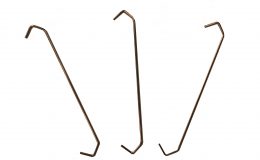Blood vessels, an indispensable part of the blood circulation system, play a vital role in carrying deoxygenated blood back to the heart. These fragile vessels are a complex networ oculax na ocik that spans throughout the human body, making certain the consistent circulation of blood to every body organ and cells. While the specific variety of capillaries in the body may vary from person to person, this article will certainly discover the major capillaries as well as their features, shedding light on the amazing intricacies of our vascular system.
The Function of Capillaries in Flow
Veins are capillary that deliver blood from numerous locations of the body in the direction of the heart. Unlike arteries, which lug oxygenated blood far from the heart, capillaries largely carry deoxygenated blood, although there are exemptions. The return of deoxygenated blood to the heart is an important part of the circulatory process, making sure that the blood can be reoxygenated by the lungs prior to being pumped back out to the body.
Veins operate in consistency with arteries as well as veins to make certain continual blood flow. Arteries provide oxygen-rich blood to the organs as well as cells, and also as this blood is made use of, veins gather the deoxygenated blood as well as return it to the heart for filtration. The intricate system of veins makes certain that every part of the body gets the necessary nutrients and also oxygen for optimum functioning.
While arteries are recognized for their thick as well as muscle walls, blood vessels have thinner wall surfaces, commonly equipped with shutoffs that protect against the backflow of blood. These valves make sure that blood moves in the appropriate direction as well as avoid merging or blockage. Due to their thinner wall surfaces, veins can broaden and suit larger volumes of blood, making them more flexible than arteries.
- Superior Vena Cava: This is among the mother lodes responsible for returning deoxygenated blood from the top body to the heart. It obtains blood from the head, neck, arms, and also top breast.
- Inferior Vena Cava: The substandard vena cava is the largest vein in the body and also carries deoxygenated blood from the reduced body to the heart. It collects blood from the abdominal area, pelvis, and legs.
- Pulmonary Blood vessels: Unlike various other blood vessels, pulmonary blood vessels carry oxygenated blood. These blood vessels transport blood from the lungs back to the heart, especially to the left atrium.
- Site Vein: The portal capillary is a vital blood vessel that brings nutrient-rich blood from the gastrointestinal organs to the liver.
- Kidney Veins: These capillaries carry deoxygenated blood from the kidneys to the substandard vena cava.
The Network of Outer Capillaries
Along with the principal blood vessels pointed out above, the body makes up a comprehensive network of outer veins that branch out to different organs as well as cells. These peripheral blood vessels play a critical duty in making certain proper blood supply throughout the body.
The capillaries in the arms as well as hands include the basilic vein, cephalic blood vessel, as well as radial as well as ulnar blood vessels. These blood vessels accumulate deoxygenated blood from the upper extremities and also transportation it back to the heart. Similarly, the blood vessels in the legs and feet, such as the excellent saphenous capillary, little saphenous capillary, and also popliteal blood vessel, drain deoxygenated blood from the reduced extremities and also return it to the heart.
- Deep Blood vessels: Deep capillaries run alongside major arteries and also are responsible for transporting most of blood back to the heart. Examples include the femoral capillaries in the thighs as well as the popliteal capillaries behind the knees.
- Superficial Blood vessels: Shallow blood vessels lie closer to the surface of the skin as well as show up in some individuals. They include veins such as the saphenous blood vessels in the legs.
Each organ and tissue in the human body has a certain network of capillaries that makes certain sufficient blood supply. As an example, the heart has its very own network of coronary capillaries, while the liver has the hepatic blood vessels. These specialized blood vessels play an important role in maintaining the functionality of their corresponding organs.
The Intricacy of the Venous System
Understanding the number of capillaries in the body is a difficulty due to the ins and out as well as variability of the vascular system. The body’s venous network is highly interconnected as well as frequently adapting to fulfill the transforming needs of various tissues.
The specific matter of capillaries can vary from a single person to depanten gel articulatii another, but it is approximated that the body has tens of countless capillaries. Furthermore, the veins themselves have various dimensions, from large capillaries like the remarkable vena cava to little capillary blood vessels that connect arterioles as well as venules.
The complex nature of the venous system highlights the relevance of keeping it healthy and balanced. Keeping proper hydration, normal exercise, as well as avoiding too much periods of standing or sitting can help advertise great venous circulation and also prevent problems such as varicose veins or deep capillary apoplexy.
Finally, the venous system in the body is an impressive network that ensures the constant flow of deoxygenated blood back to the heart. Consisting of primary veins like the premium and also substandard vena cava, in addition to outer blood vessels throughout the body, this complex system permits optimal body organ and tissue feature. Understanding the complex nature of this vascular network sheds light on the value of maintaining a healthy blood circulation system.












